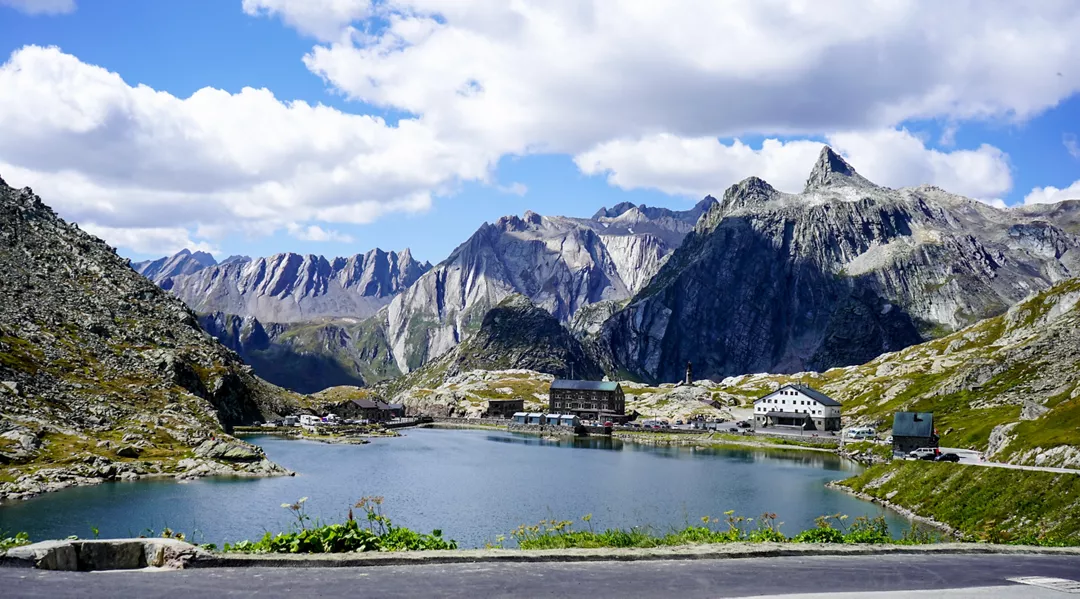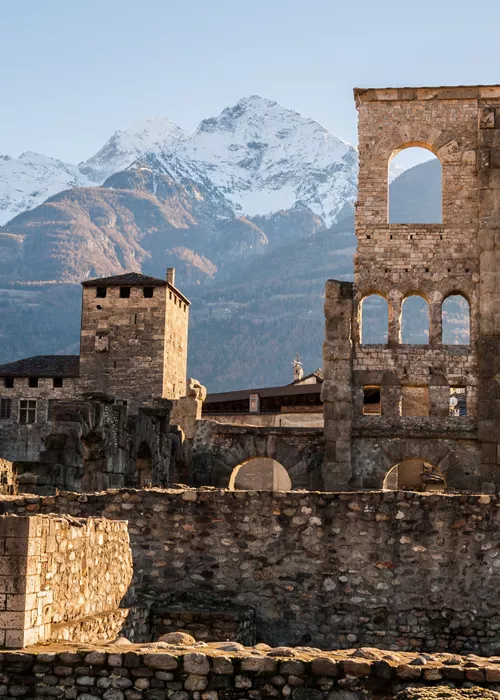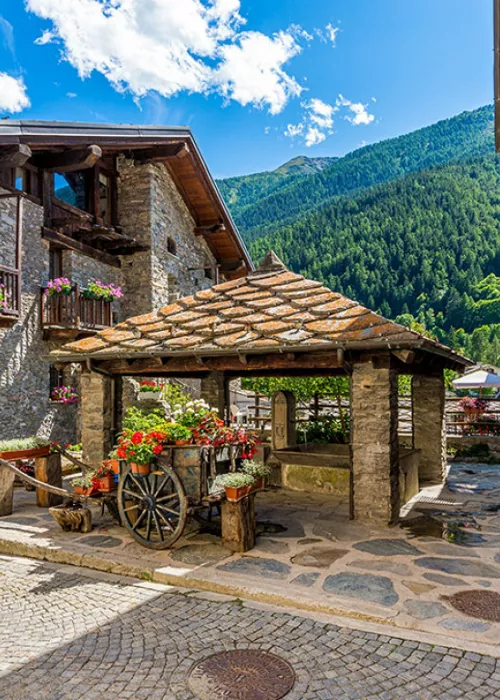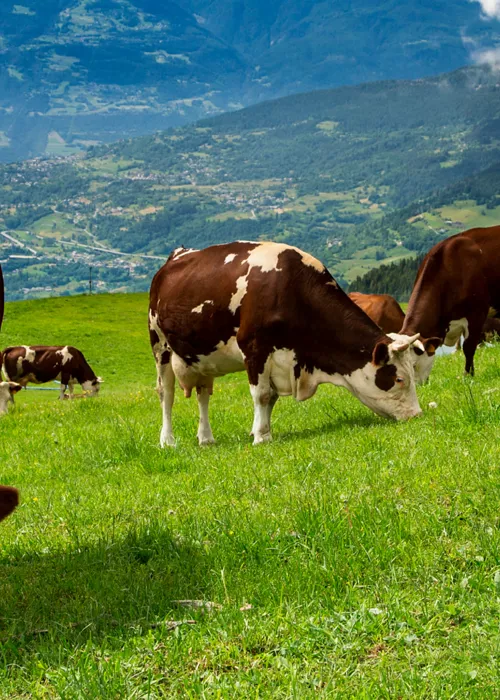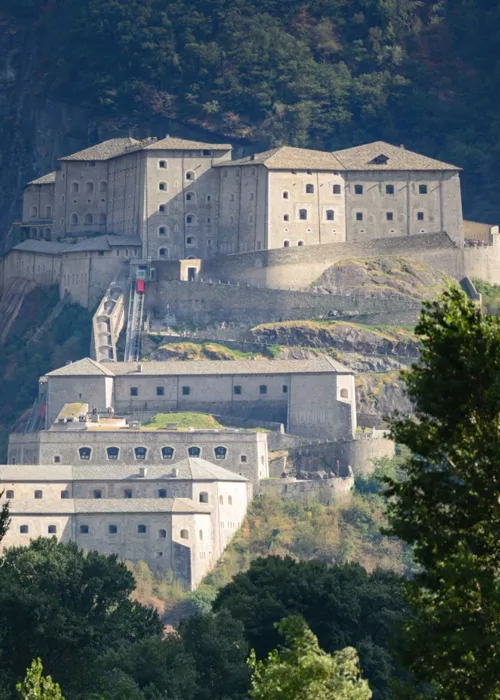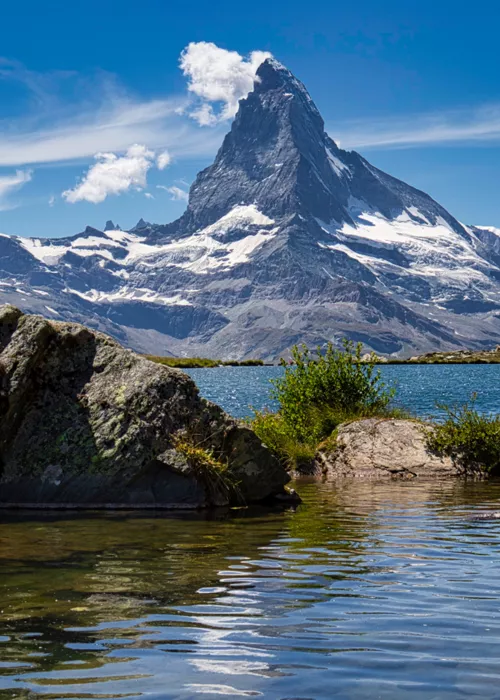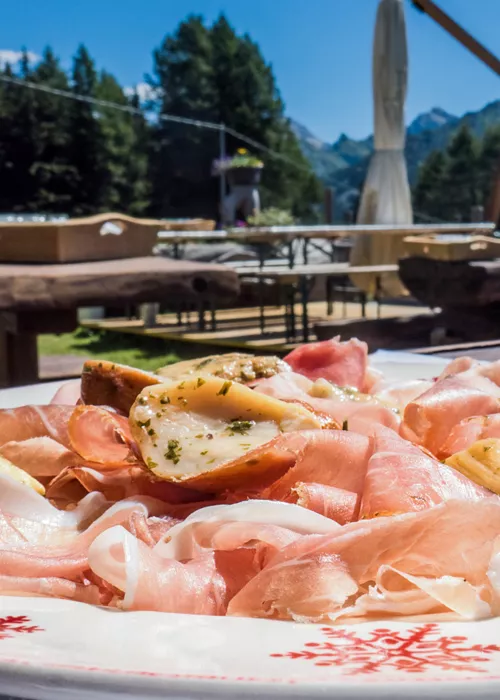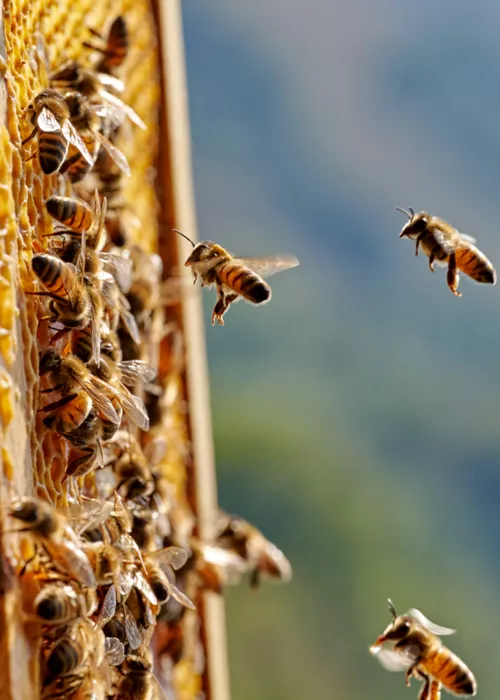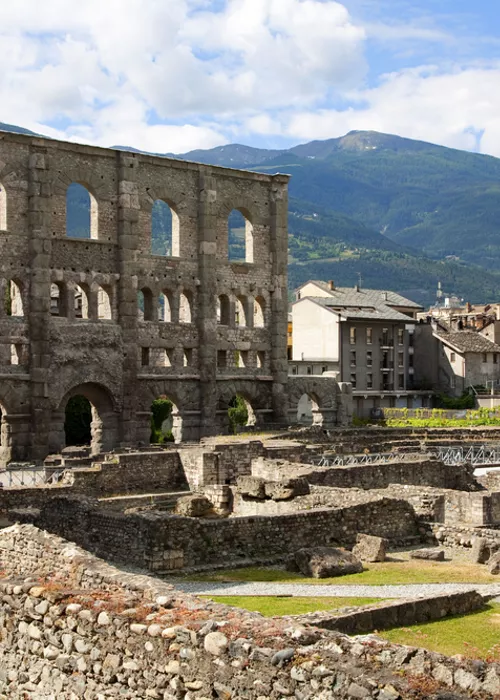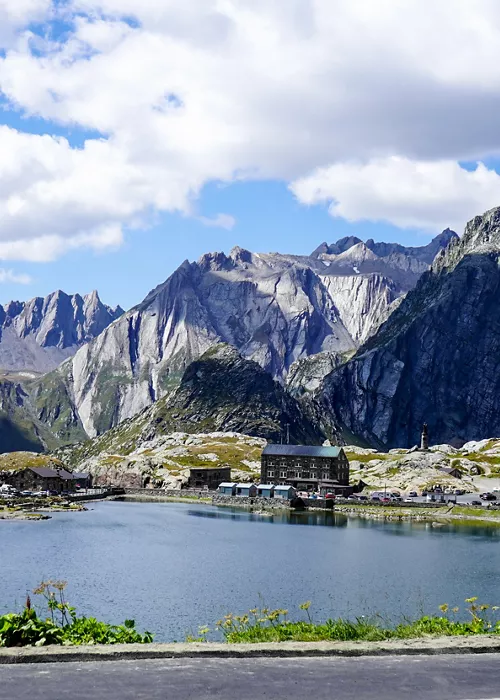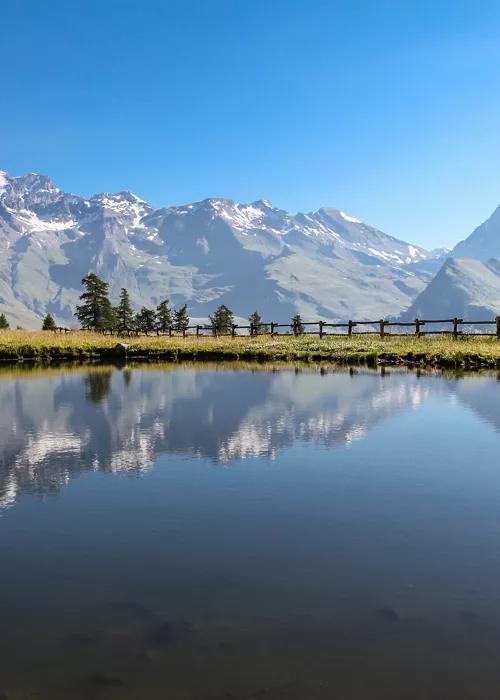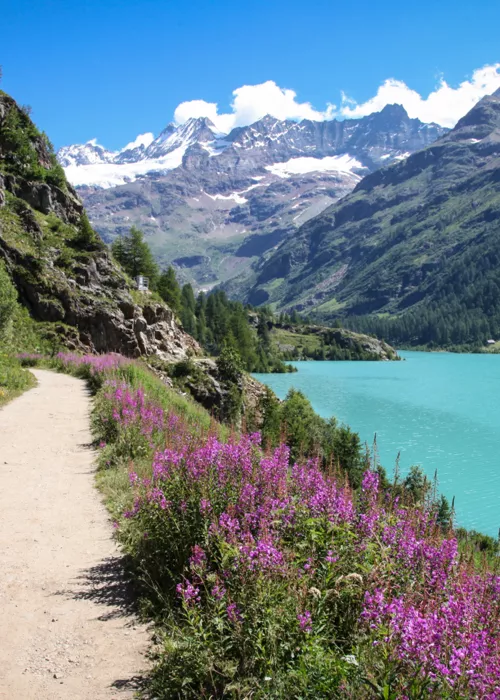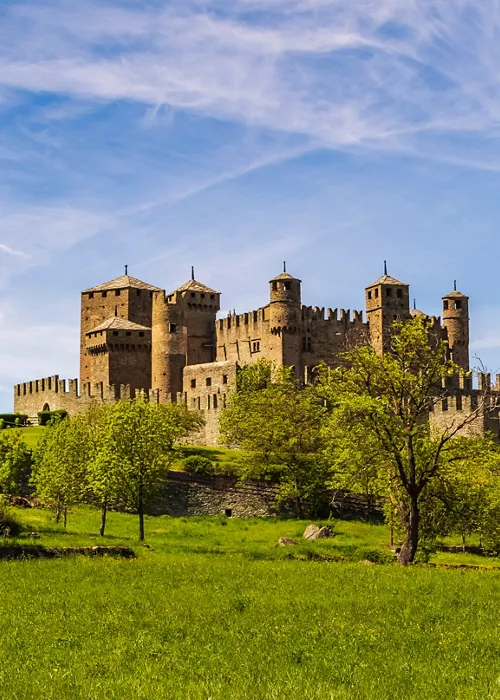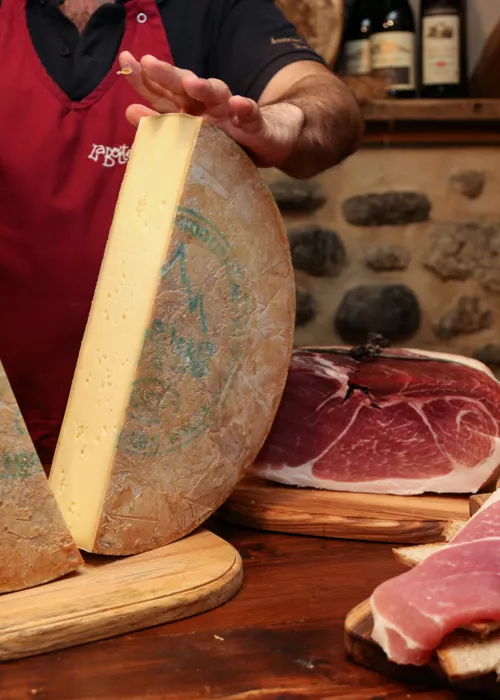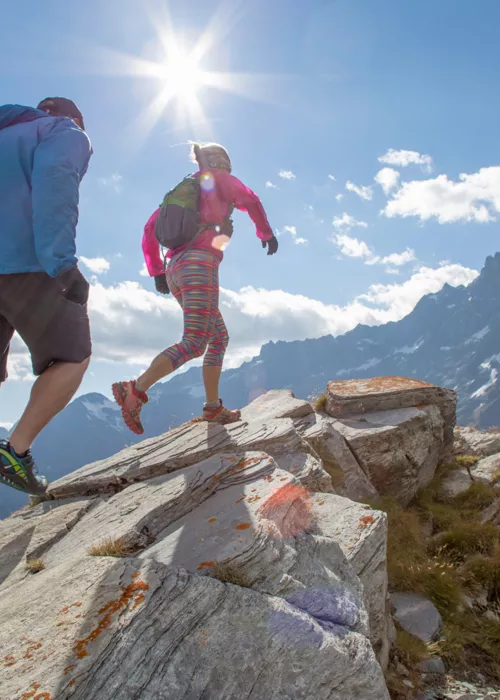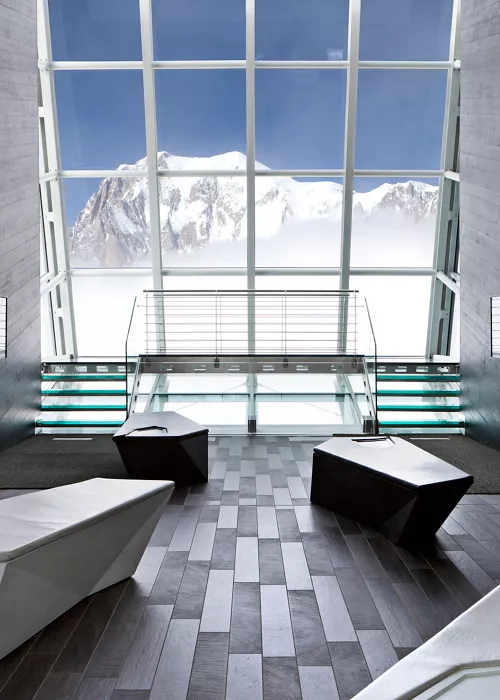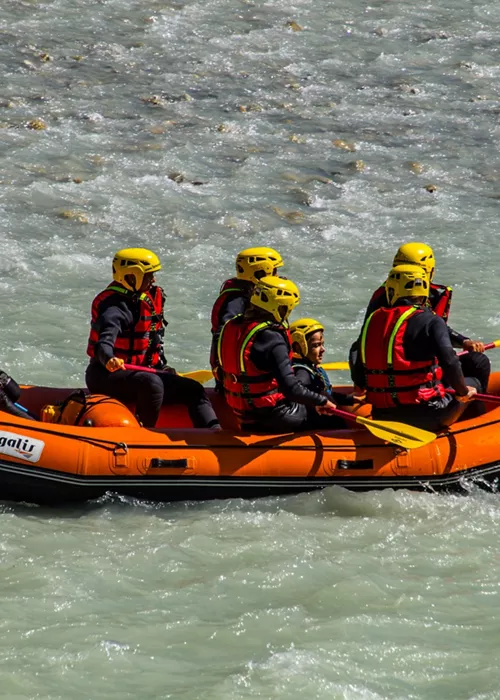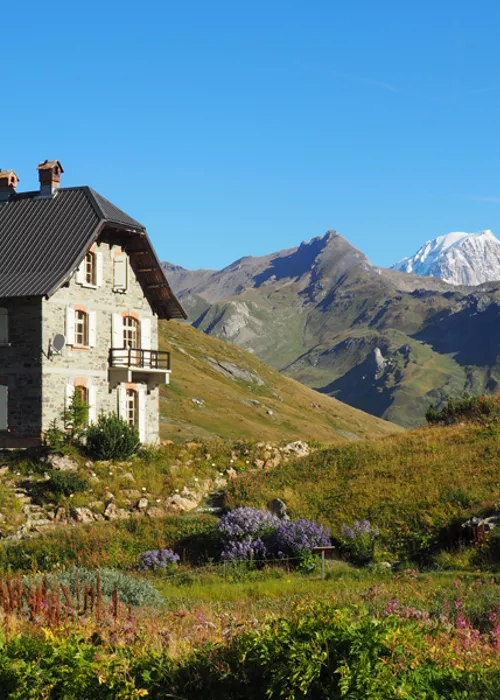The Great St Bernard Pass: following the footsteps of pilgrims
4 minutes
The initial section of the Italian Via Francigena, leading from the Great St Bernard Pass to Aosta, crosses a very suggestive valley, with enchanting mountain villages and numerous monuments that testify to the passage of pilgrims and merchants. Nowadays the valley has become a popular destination for off-track mountain skiing enthusiasts and lovers of authentic alpine settings far from busy, overcrowded locations.
The Great St Bernard Pass and rescue dogs
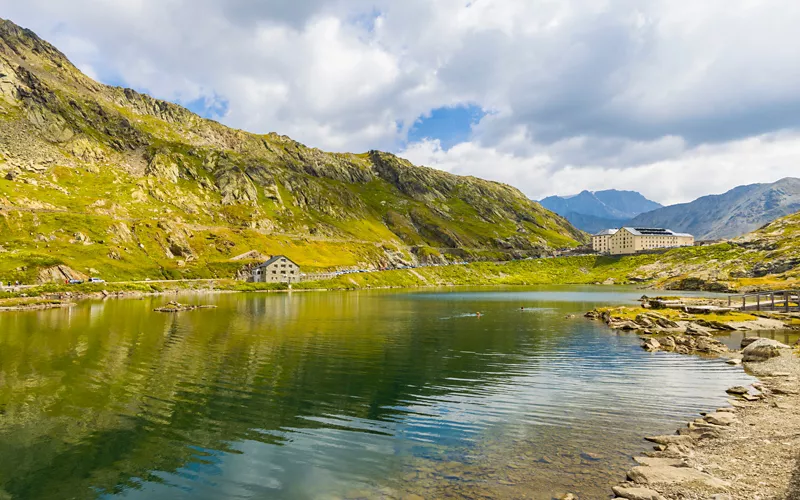
Due to its importance the Great St Bernard Pass (2,473 m. a.s.l.) has always been a sacred place. It was here that the ancient Romans venerated Jupiter Poeninus, the protector of travellers, and in the Middle Ages Saint Bernard of Menton had a monastery built to provide hospitality for pilgrims on their way to or returning from Rome.
Today the impressive monastery, which was enlarged and acquired its current form in the 19th century, is situated in Swiss territory and is still a place where travellers are welcomed. It also hosts a museum dedicated to the history of the mountain pass, the natural environment of the valley and St Bernard dogs. Since 1650 these animals, originally from central Asia, have been bred on the Great St Bernard hill as guard dogs and as rescue dogs that might be used in the event of an avalanche and they acquired their name from this sacred place.
From Saint-Rhémy-en-Bosses to Gignod
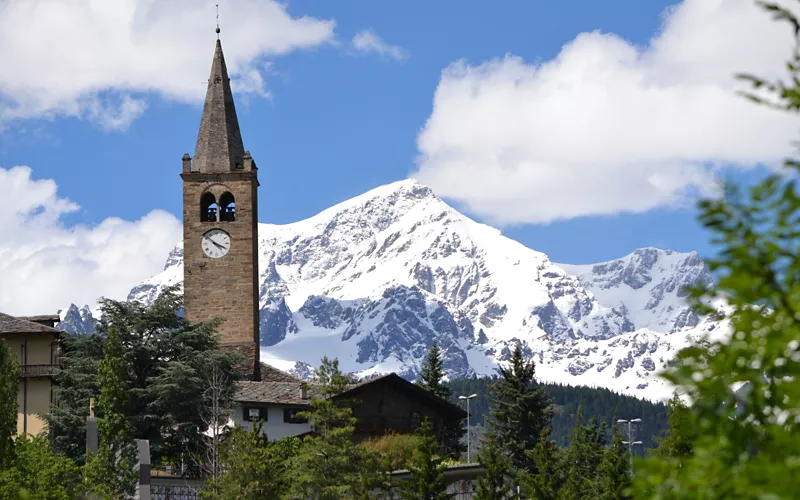
In the descent along the Great St Bernard valley towards Aosta the first village you will visit is Saint-Rhémy-en-Bosses, a place inhabited since the Neolithic age in what has always been an area of transit. In Roman times it became a mansio and, that is, a resting place equipped for the changing of horses, where there was an inn and everything necessary to assist travellers during their journey. In the 10th century, the Counts of Savoy, the lords of the area, granted to the inhabitants of the village - and also their neighbours at Étroubles - the exclusive right to accompany travellers from Aosta to the pass.
Known as the marronniers, the villagers acted as guides and porters, some with pack animals and others travelling on foot. In exchange, they were duty bound to maintain the road so as to avoid any inconvenience on the part of travellers and were required to provide free accommodation for the noble Savoy family.
In the following centuries they were re-named as the ‘snow soldiers’ and they had the task of carrying out maintenance and rescue activities, offering a form of civil protection ante litteram which remained active until 1915.
The next village is Saint-Oyen, where the Château Verdun is situated. Historical records of this building of great value, another hospice for travellers, date back to 1137. Today it is the holiday home of the Diocese of Aosta, which, for a thousand years, has welcomed groups of individuals and pilgrims.
The route leads on to Étroubles, one of the most beautiful villages in Italy on account of its old stone dwellings, a covered bridge, spring wells and a permanent outdoor contemporary art exhibition entitled À Étroubles, avant toi sont passés… (Before you, travellers who passed through Étroubles …). The exhibition was set up and curated in collaboration with the Pierre Gianadda Foundation of Martigny to focus on the identity of the village as a place that travellers visit and pass through on their journey.
During the winter months the modern marronniers descend from Saint-Rhémy to Étroubles along the 18-km cross-country track or make use of the skiing facilities in the small, magnificent, south-facing area of Crévacol.
The final stopping point is Gignod, a village originally founded by the Romans that is quite close to Aosta. Here you will find a square medieval tower that formed part of a fortress guarding the Via Francigena and the beautiful church of St Hilary, which preserves an important set of frescoes created in the 15th century.
The charm of wild mountain landscapes
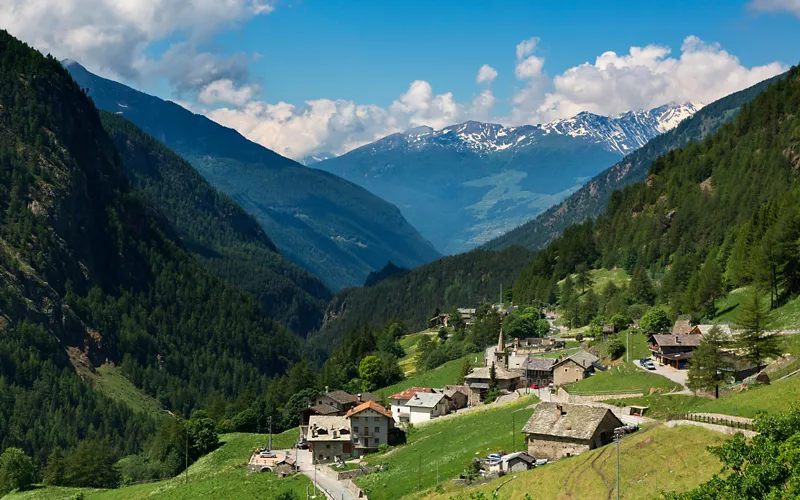
An alternative route to the Great St Bernard pass was the valley of Valpelline, as testified by the place-name (Vallis Poenina was an area dedicated to Jupiter Poeninus) and also by the presence of numerous chapels situated along its course.
Today it is one of those valleys with no ski facilities at all and it is barely affected by the mass tourism phenomenon. The valley is thus particularly attractive for hikers who want to walk through it as far as the artificial lake of Place Moulin, a body of water that reflects the numerous peaks that culminate at the Dent D'Herens (4,171 m. a.s.l.).
From the centre of the village of Valpelline a steep road leads up to the Ollomont valley, a basin area full of streams and mountain tarns. Travelling along this wild, remote route many Italian anti-fascists managed to emigrate to Switzerland. One of the more notable members of the resistance movement was Luigi Einaudi, the first president of the Republic of Italy who was elected by its post-war Parliament.

